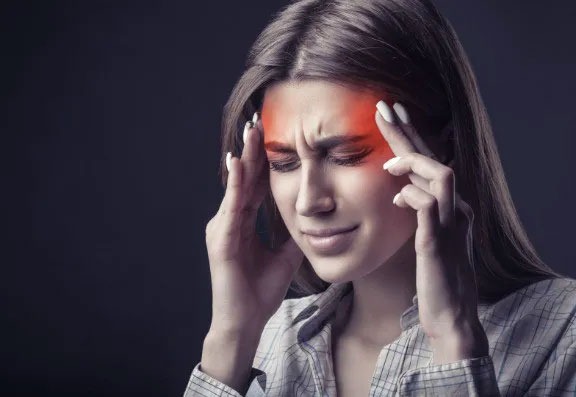While Botox is most commonly used as an anti-wrinkle treatment, it can also be used for a number of medical conditions. Interestingly, Botox injections can be used as a treatment for chronic migraine headaches and other headache-related conditions.
A chronic migraine is characterised by recurring headaches that cause mild to severe pain on one side of the head. These chronic migraine attacks can last hours up to three days and are often accompanied by nausea and vomiting.
Unfortunately, chronic migraine and episodic migraine symptoms are often accompanied by sensitivity to light and sound as well. Chronic migraine pain is typically throbbing in nature, but it can also be stabbing or dull aches.
While their exact cause is unknown, chronic migraines are thought to be associated with temporary changes in nerves, blood vessels and chemicals in the brain. Migraines can be triggered by stress, tiredness, certain foods or coming on your period.
Botox can be used as a chronic migraine treatment. Botox is a brand of botulinum toxin – a neurotoxin which interferes with the transmission of nerve signals throughout your body.
Botulinum toxin is thought to help treat migraines by blocking the chemicals that carry pain signals from within your brain when injected around the nerve endings where pain transmission takes place. This can cut down the symptoms completely or partially reduce the number of migraine attacks.
Botox is approved for use on the NHS for treating frequent migraines. These are defined as more than 15 headaches a month, with at least eight showing symptoms of a chronic migraine. Botox has not been found to be effective for tension or cluster headaches.
What Does Migraine Treatment With Botox Involve?
Botulinum toxin is injected into seven muscles around the top of the forehead, above the ears and into the neck via a small needle. You will have around 31 small Botox injections. The areas can be numbed beforehand.
You may notice some redness and/or swelling around the injection points, which will settle after a few hours.
Repeated Botox injections for migraine treatment are needed every three months, usually until your chronic migraines change to episodic migraines for 12 weeks in a row.


How Much Does It Cost to Treat Migraines With Botox?
You may qualify for free treatment for chronic migraine on the NHS - speak to your GP for an assessment. If NHS treatment using Botox for migraine isn't an option for you, private treatment cost varies, with an average cost of around £500.
Always see a practitioner with specific experience in using botulinum toxin for migraines.
Don't be swayed by price!
Side effects of using Botox for migraines and other brands of botulinum toxin are rare, but can include:
Exacerbation or increase in headaches/migraines
Neck muscle stiffness or pain
Swelling
Allergic reaction
Droopy eyelids
Dry eyes or mouth
Facial paralysis
The most dangerous complications are double vision and difficulty breathing, but these are thankfully extremely rare.#
If you experience any side effects or complications, contact your practitioner immediately.
Using Botox for migraine is a medical treatment, so it's really important you see a medically-qualified practitioner with specific training in this area.
They should have undergone training in anatomy and physiology, as well as being accountable to a regulatory body such as the General Medical Council (GMC), Nursing and Midwifery Council (NMC), or General Dental Council (GDC).
They should also be able to advise you of the risks of injectable migraine treatment and be confident in handling complications if they arise.
Check out our handy guide for finding a trusted expert who offers Botox for migraine.
Book a Botulinum Toxin Consultation Today.
Botox for migraines is available on the NHS, but only in specific circumstances. See your GP to find out if you're eligible for Botox for migraine treatment, or see your nearest accredited and verified medical practitioner who can offer private migraine treatment below.
As always, if you have any questions you can use our Botox Q&A where you can ask for more advice direct from a trusted, experienced medical practitioner.
Baby Botox, also known as micro-Botox, is a cosmetic procedure that has gained popularity in recent years.
I would be approaching 50 soon. I am finding myself increasingly concerned how do I maintain my skin and prepare myself for when I am older...
Smoker lines are those pesky wrinkles etched around the lips and are a common concern. So what can be done about them?
Hey, wait!
Before you go.....
Let's stay in touch, pop your details here and we'll send our editor's hand-picked updates on your fave subjects.